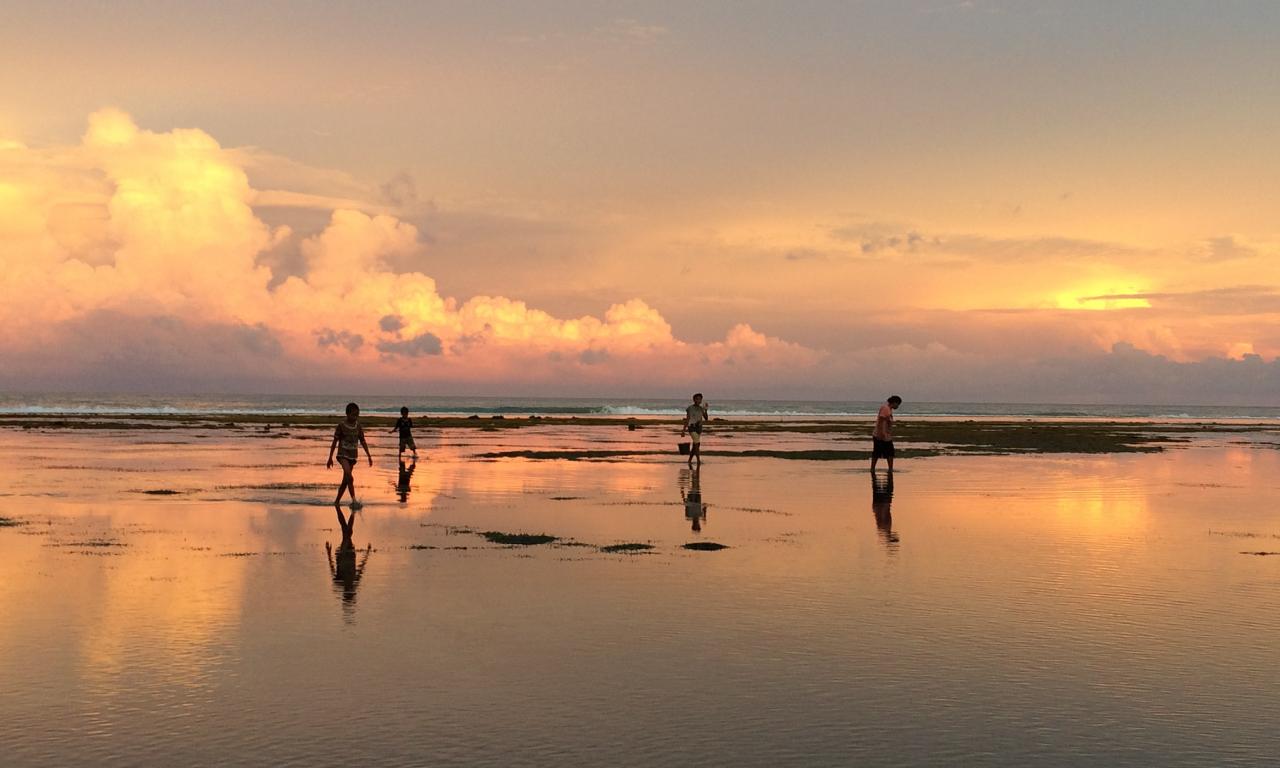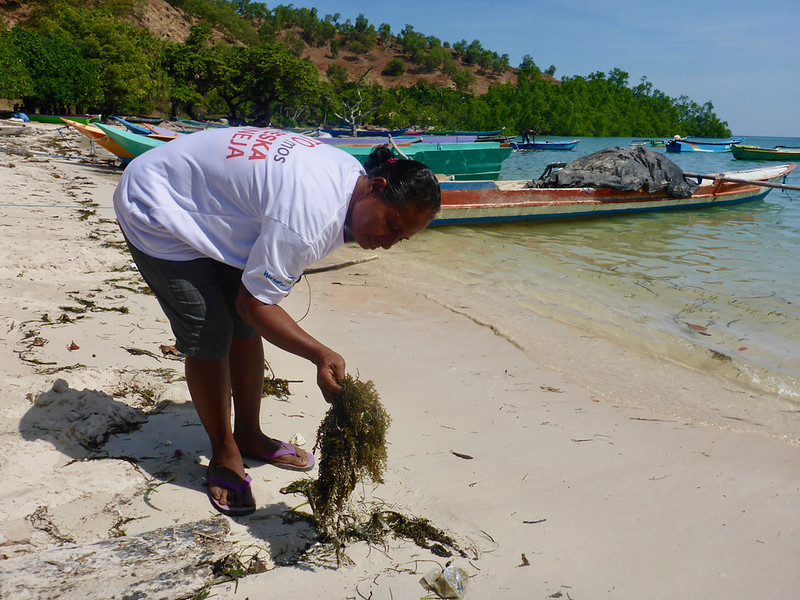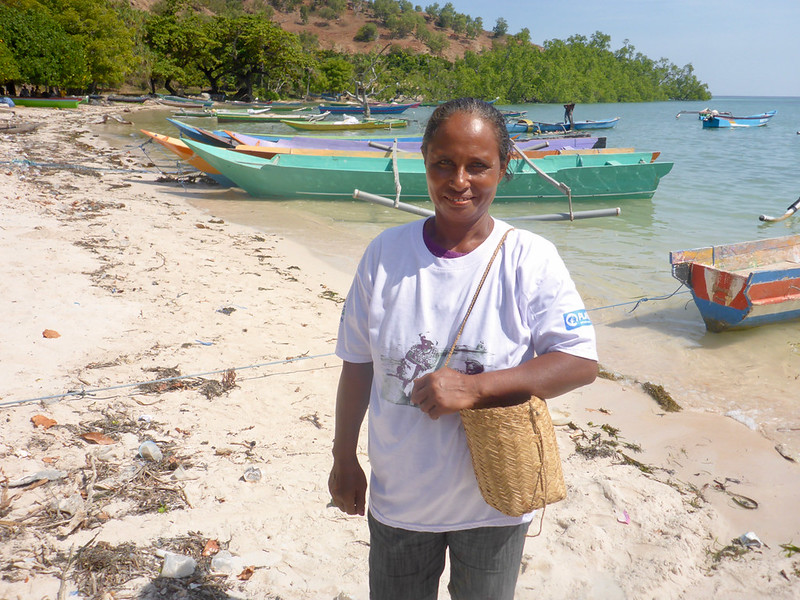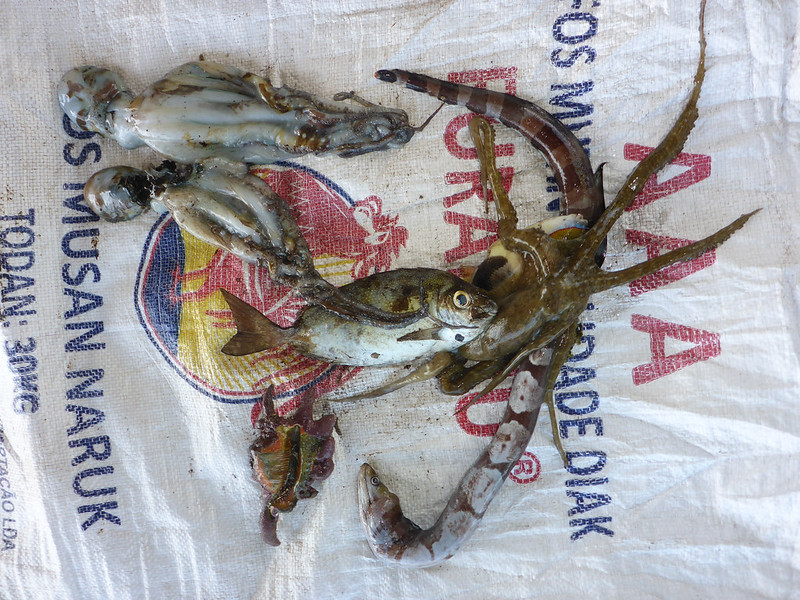
It’s 5 am on an August morning. The tide is low at Beacou beach, where mother-of-nine Otilda Souza wades through the shallow waters, prodding the sand with a rod.
Otilda is looking for shellfish, weeds and small fish to catch. But what she really wants are some octopus.
“Octopus is good for eating; we like the taste. And if catch enough then we can sell it,” says the 45-year-old. “I can sell five small octopus at a roadside stall for USD 10.”
This is a significant amount of money in rural Timor-Leste, yet the significance of gleaning activities has long been ignored and poorly-documented.
Now, for the first time, new research published in AMBIO is shining a light on gleaning.
Important for livelihoods and nutrition
The research by the CGIAR Research Program on FISH led by WorldFish and partners finds that gleaning—the collection of intertidal marine resources by hand or hand tool—is most commonly done by women and young children in Timor-Leste.
It provides a regular and reliable income for women in places where shallow reefs, seagrass and mangroves are close to shore, like the 147-household village of Beacou on the north coast.

The potential to make money was what inspired Francisca Formendes to start gleaning three years ago, when she moved from the inland village of Batugade to Beacou after getting married.
“I saw another family doing gleaning and earning money from selling their catch. I wanted to do the same, so my mother-in-law taught me how to glean,” says the 27-year-old, who also makes an income as a middleperson buying and selling fish.
The research, Gendered contributions to food and income from small-scale fisheries in Timor-Leste, finds that women gleaners tend to catch and sell relatively small quantities for their time and effort.
“Whenever there’s low tide, I go gleaning. Sometimes I’ll go early in the morning and then again at 11 am,” says Formendes, who goes gleaning for up to a couple of hours each time.
‘Our lives depend on gleaning’
Unlike fishing, gleaning is rarely done alone. Women glean together in groups as a hobby or for a social activity. And from a young age, children accompany their mothers and other women when gleaning, during which time they learn how to do it themselves.
This is exactly how Otilda learned to glean—by watching her mother when she was a child. Now it’s become a regular, and sometimes daily, activity for her.
“Our lives depend on gleaning, because it provides us with an income as well as food,” says Otilda.

The research found that women gleaners never come home empty-handed—every time they go gleaning, they get something.
This 100 percent catch rate compares with an 84 percent catch rate for men, who mostly go fishing with gear in small boats and target more distant reef and oceanic areas.
The success rate also highlights the importance of gleaning for food security in Timor-Leste, where around 75 percent of the population are food insecure and around 50 percent of children under five are stunted.
“If we catch a big amount then we’ll sell it, but If we catch a little bit, we’ll keep it to eat,” says Otilda. “We cook different meals depending on the species we catch. If it’s fish, we’ll boil it. If it’s octopus, we’ll fry it.”
Understanding women’s roles
The gleaning research—the first of its kind in Timor-Leste—was undertaken as part of the Piloting Sustainable Livelihood Interventions in Coastal Timor-Leste project funded by Plan International UK (2017–2019).
It’s the first proper study to quantify what women and children are catching and what they do with it, as well as the environmental impact and sustainability of gleaning activities.
“We held focus group discussions with 10 communities, and used participatory fishing dairies and landing data from six communities to compare men’s and women’s fishing activities,” explains Agustinha Duarte, a research analyst with WorldFish who led the data collection.

The findings will help to build a better picture of women’s roles in small-scale fisheries in Timor-Leste.
“Women’s fishing in Timor Leste is crucial for food security by providing reliable food and income direct to the household,” explains Duarte.
Women gleaners are also key stewards of coastal resources. The research found that women continually monitor and notice ecological changes in their nearshore environment and, therefore, have knowledge that could be better harnessed in management decisions.
Yet women have long been invisible in fisheries statistics and from the sector overall.
This invisibility means women’s voices are ignored in national policy discussions, and women have little opportunity to participate in village decision making about coastal resources and fisheries.
“Women are accessing the resources but they’re not pulling in the big fish,” explains lead author Alex Tilley. “So, women are ignored when it comes to making decisions about a fishery.”
“It’s only by collecting disaggregated data that we can start to better understand not only the importance of fisheries for women and their households, but also the need for them to actively participate in their management.”